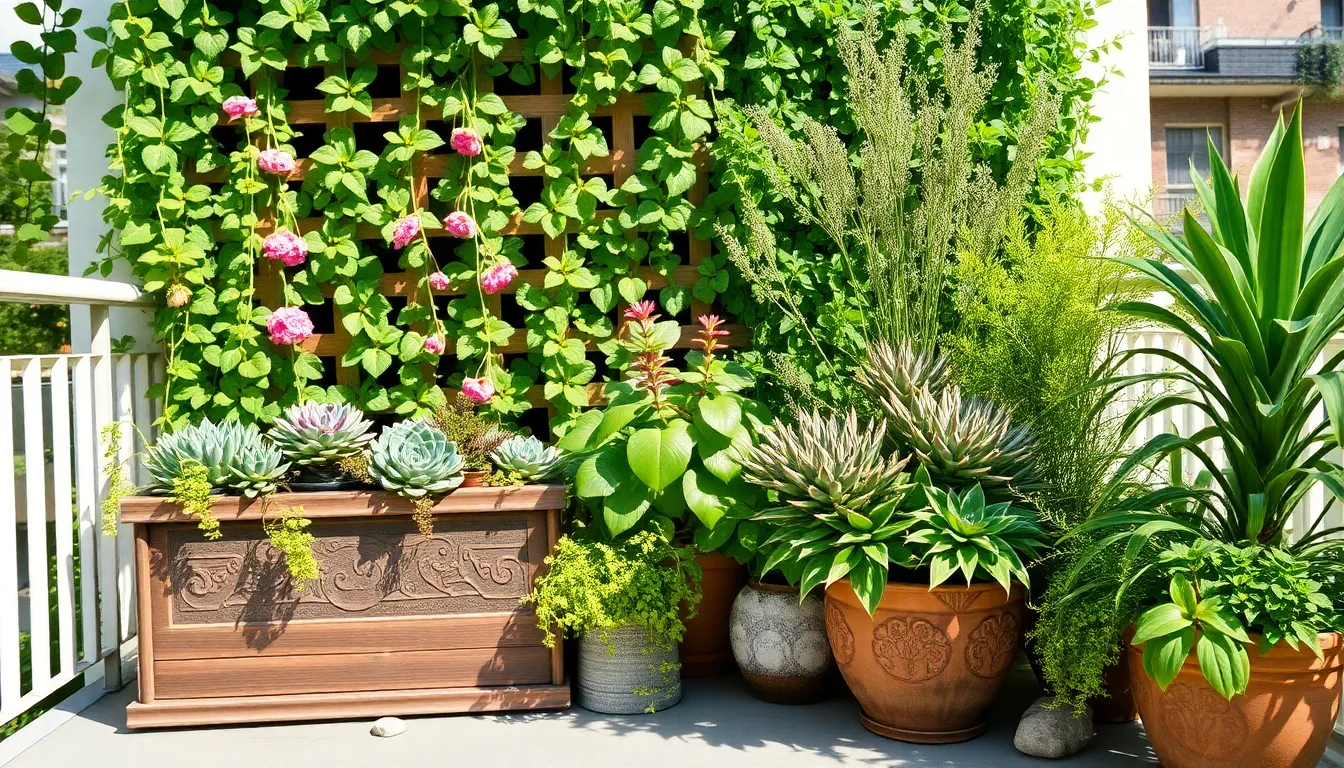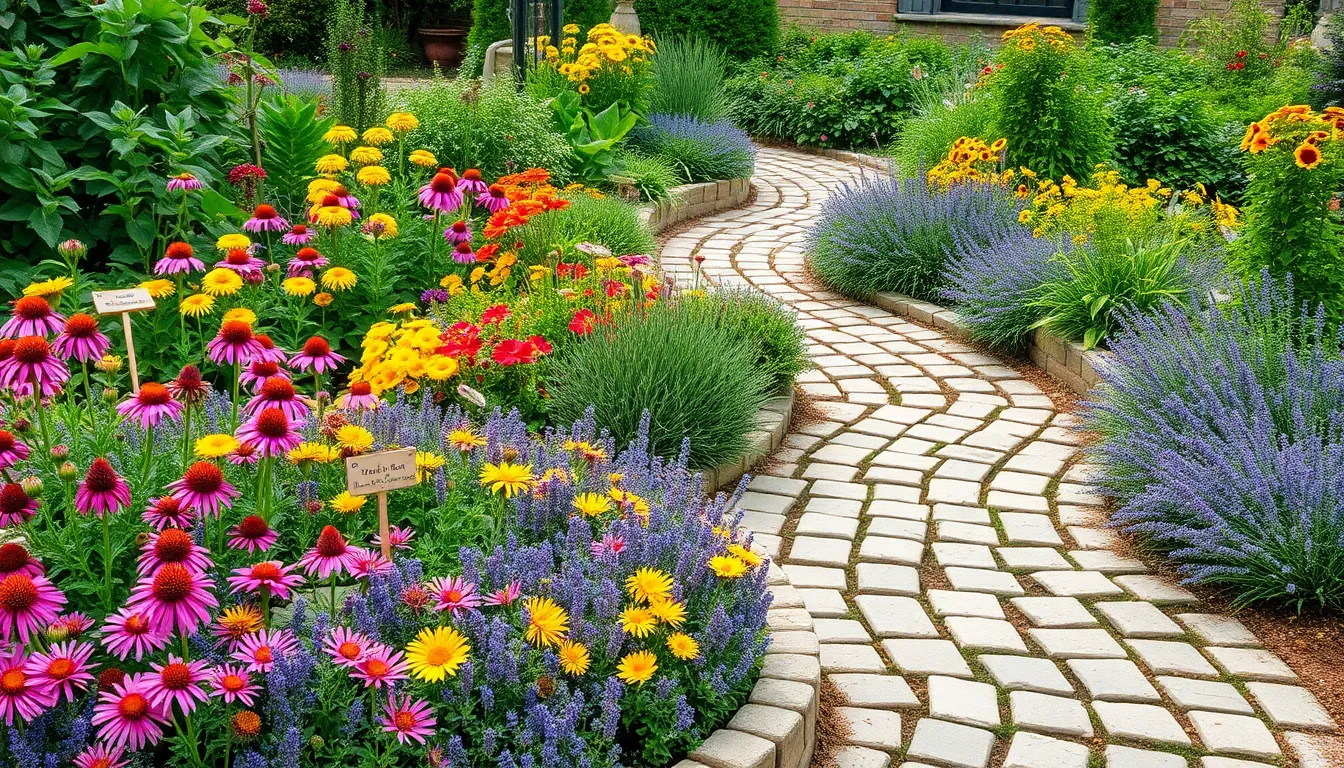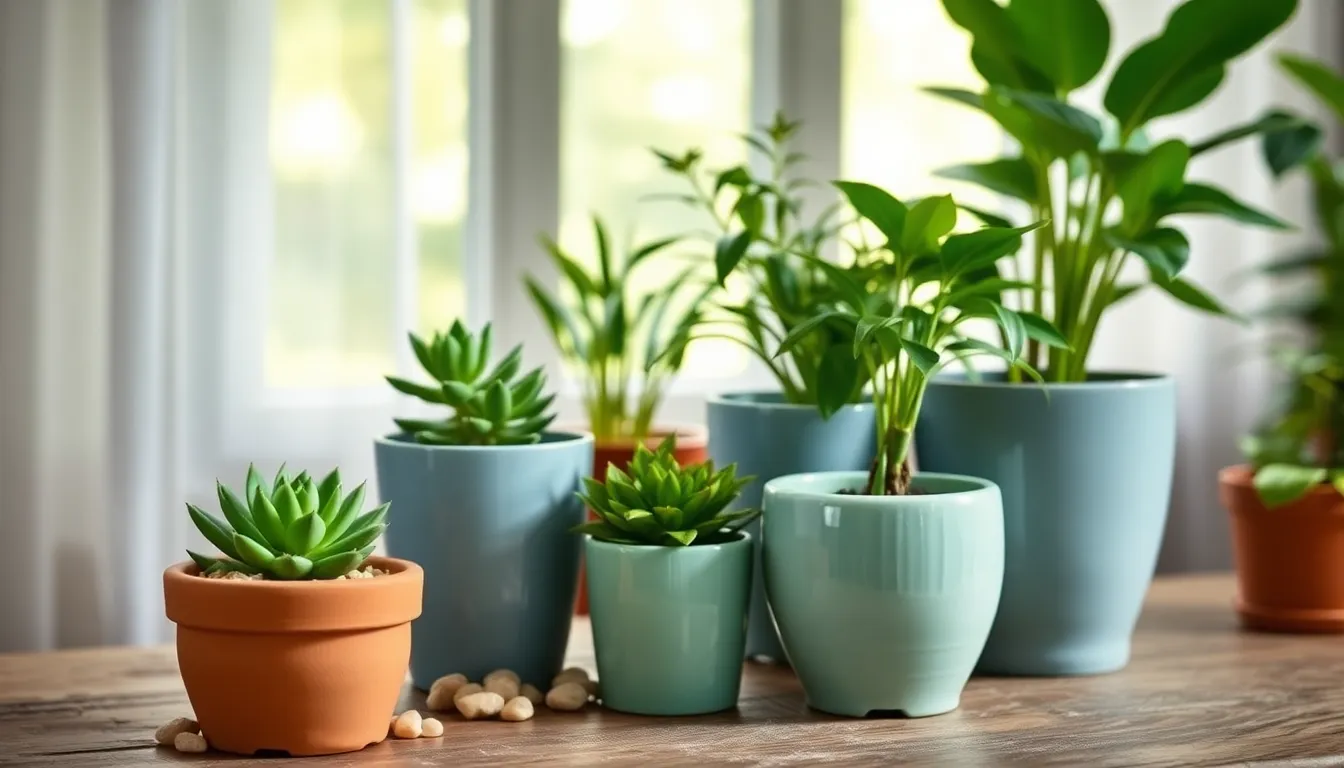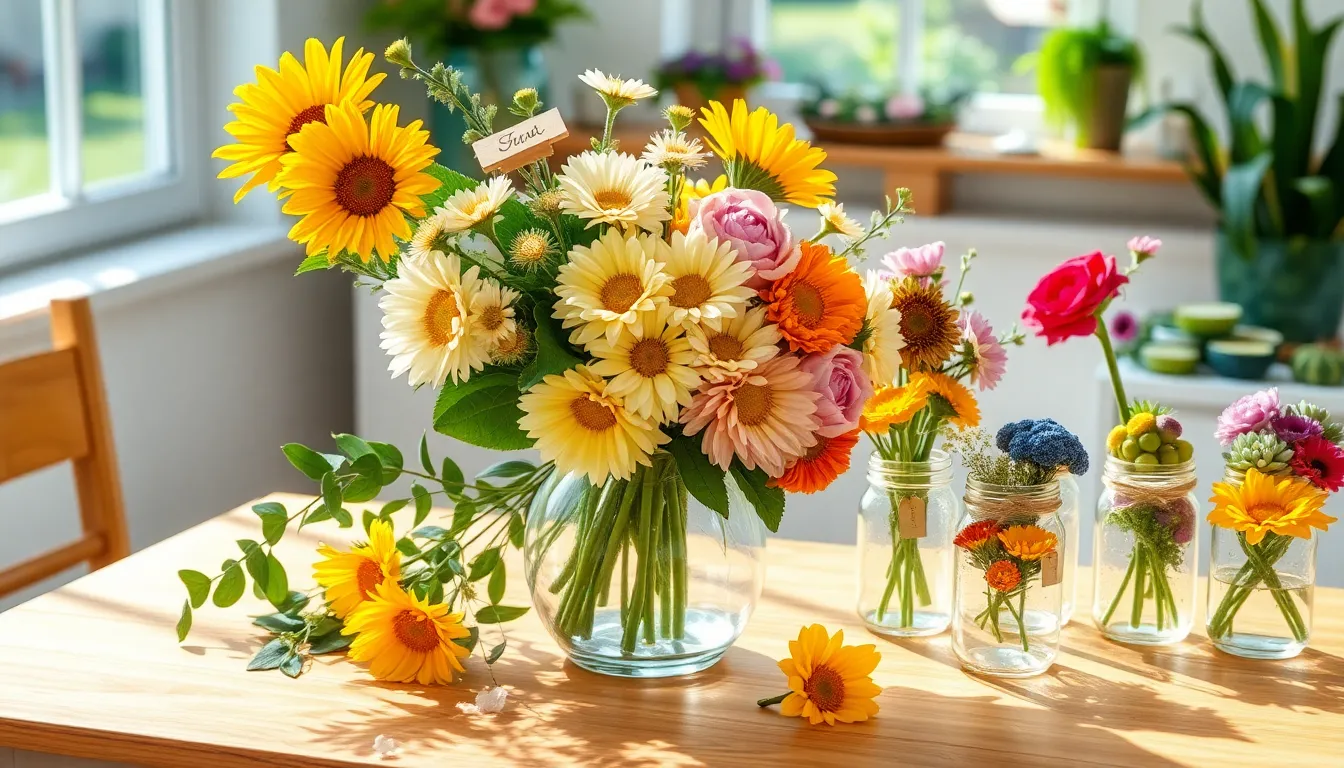Imagine stepping out onto your apartment balcony, greeted by a lush oasis of greenery that thrives despite the urban backdrop. Whether you’re just dipping your toes into the world of gardening or you’re a seasoned plant enthusiast, our guide to the “10 Best Plants for Apartment Balconies” is your ticket to transforming that compact outdoor space into a vibrant, living sanctuary.
With space-saving plants that promise to bring nature’s beauty right to your doorstep, this selection is invaluable for maximizing your balcony’s potential. You’ll discover options that offer not only aesthetic pleasure but also practical benefits such as cleaner air and even fresh herbs for your culinary adventures. Embrace the joy and rewards of successful gardening, where each plant is a testament to your green thumb prowess, and take confidence in knowing that these resilient choices are well-suited for any gardener.
Petite Lavender (Fragrant and Compact for Small Spaces)
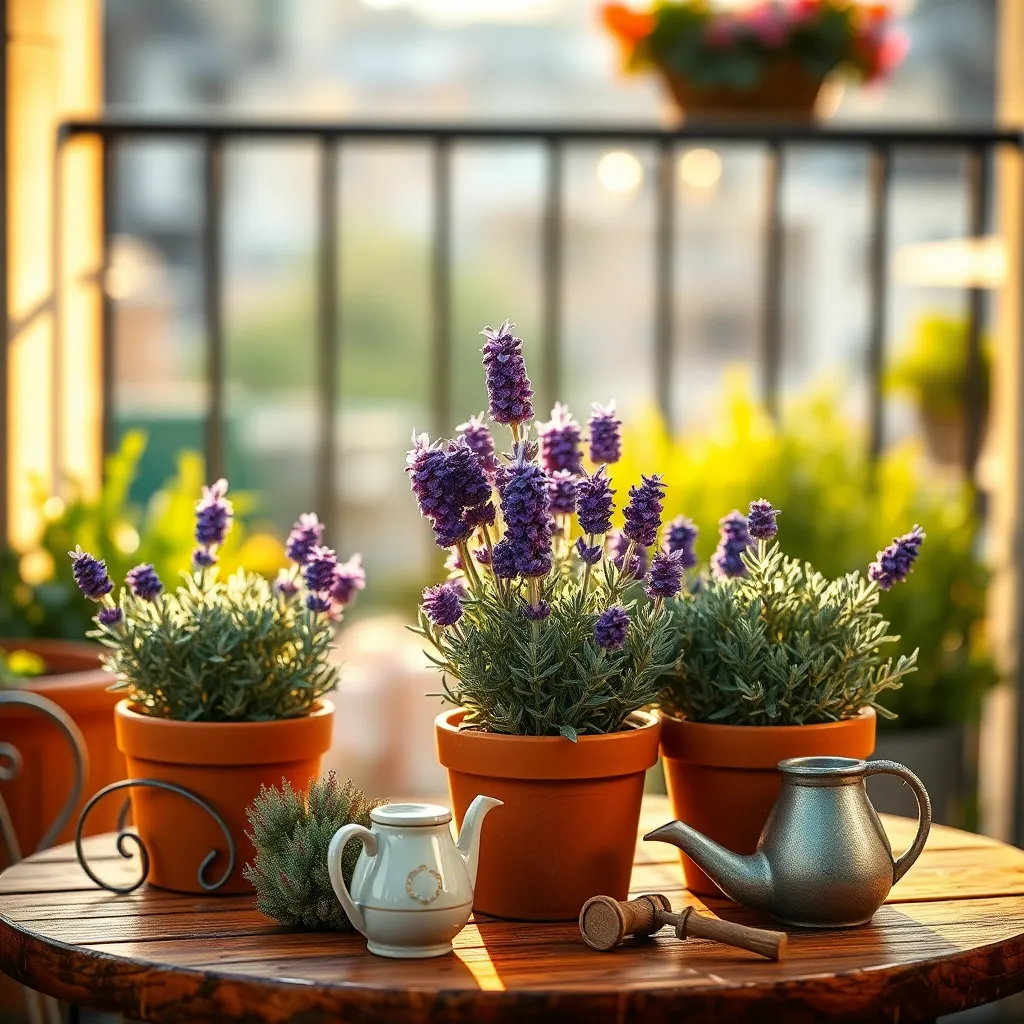
Petite lavender is an excellent choice for apartment balconies due to its compact size and delightful fragrance. This variety thrives in containers, making it ideal for small spaces where every inch counts.
To ensure your petite lavender flourishes, plant it in a well-draining soil mix, such as a combination of potting soil and coarse sand or perlite. This helps prevent root rot, a common issue when water doesn’t drain adequately.
Position your lavender container in a spot that receives at least six hours of direct sunlight daily. This ensures healthy growth and an abundance of blooms, as lavender is a sun-loving plant.
Water your lavender sparingly, allowing the top inch of soil to dry out between waterings. Overwatering can lead to root issues, so it’s best to err on the side of underwatering.
- Use a pot with drainage holes to prevent water accumulation.
- Consider pruning lightly after the first bloom to encourage more flowers.
For those looking to enhance their gardening skills, try harvesting the lavender blooms to create homemade sachets or oils. This not only utilizes the plant’s aromatic qualities but also promotes further flowering.
Dwarf Tomato Varieties (High Yield on Minimal Space)
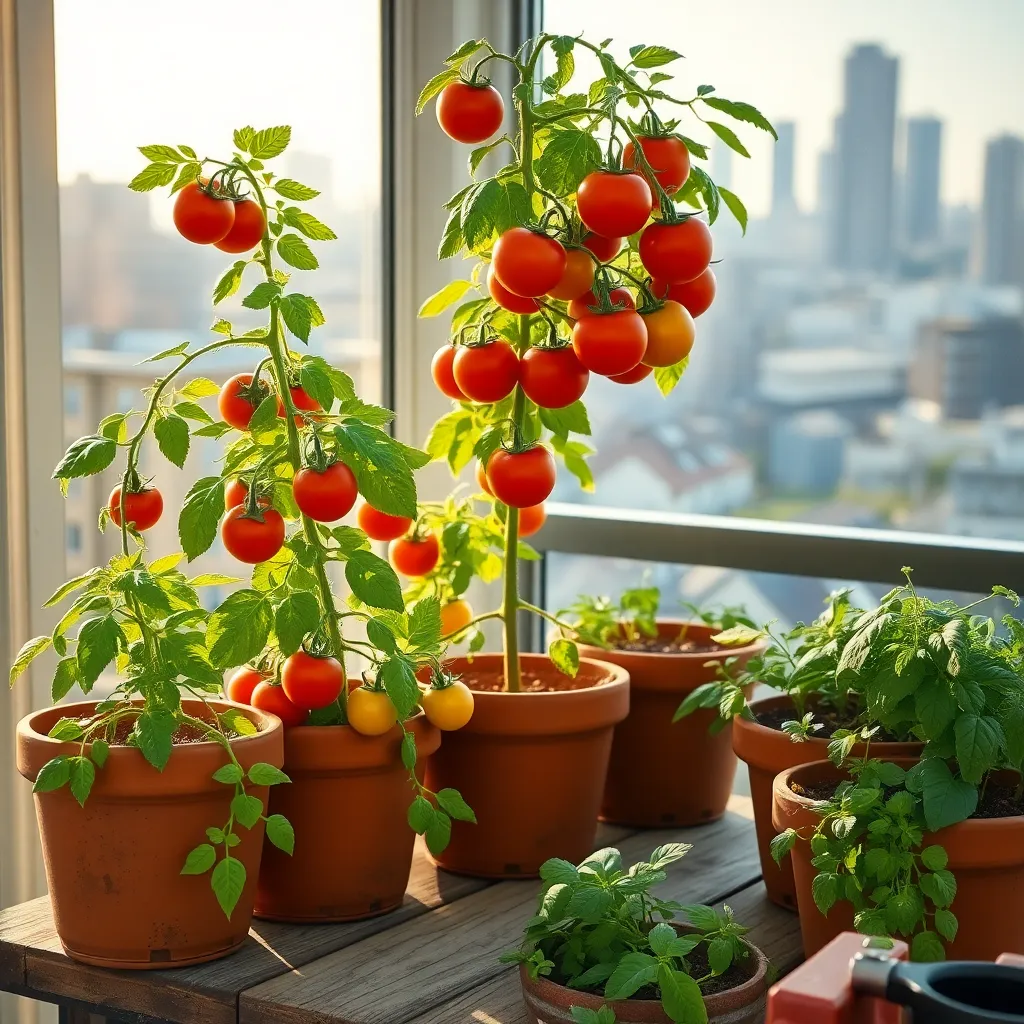
Dwarf tomato varieties are perfect for apartment balconies, offering high yields without demanding much space. These compact plants thrive in containers, making them an excellent choice for urban gardeners looking to maximize their harvest.
For optimal growth, choose a container at least 12 inches deep and fill it with a high-quality potting mix. Ensure your chosen variety receives at least 6 to 8 hours of sunlight daily, as tomatoes are sun-loving plants that develop best under bright conditions.
Water your dwarf tomatoes consistently, keeping the soil moist but not soggy. A good practice is to water in the morning, allowing the foliage to dry during the day and reducing the risk of fungal diseases.
To boost productivity, feed your tomato plants with a balanced fertilizer every two weeks during the growing season. Consider using a liquid fertilizer with a ratio of 10-10-10 or similar to provide essential nutrients for fruit development.
For those seeking a more advanced technique, try pruning the suckers—small shoots that appear between the main stem and branches—to focus the plant’s energy on fruit production. This simple technique can lead to larger and more abundant tomatoes, even in small spaces.
Hanging Pothos Plants (Air-Purifying and Aesthetic)
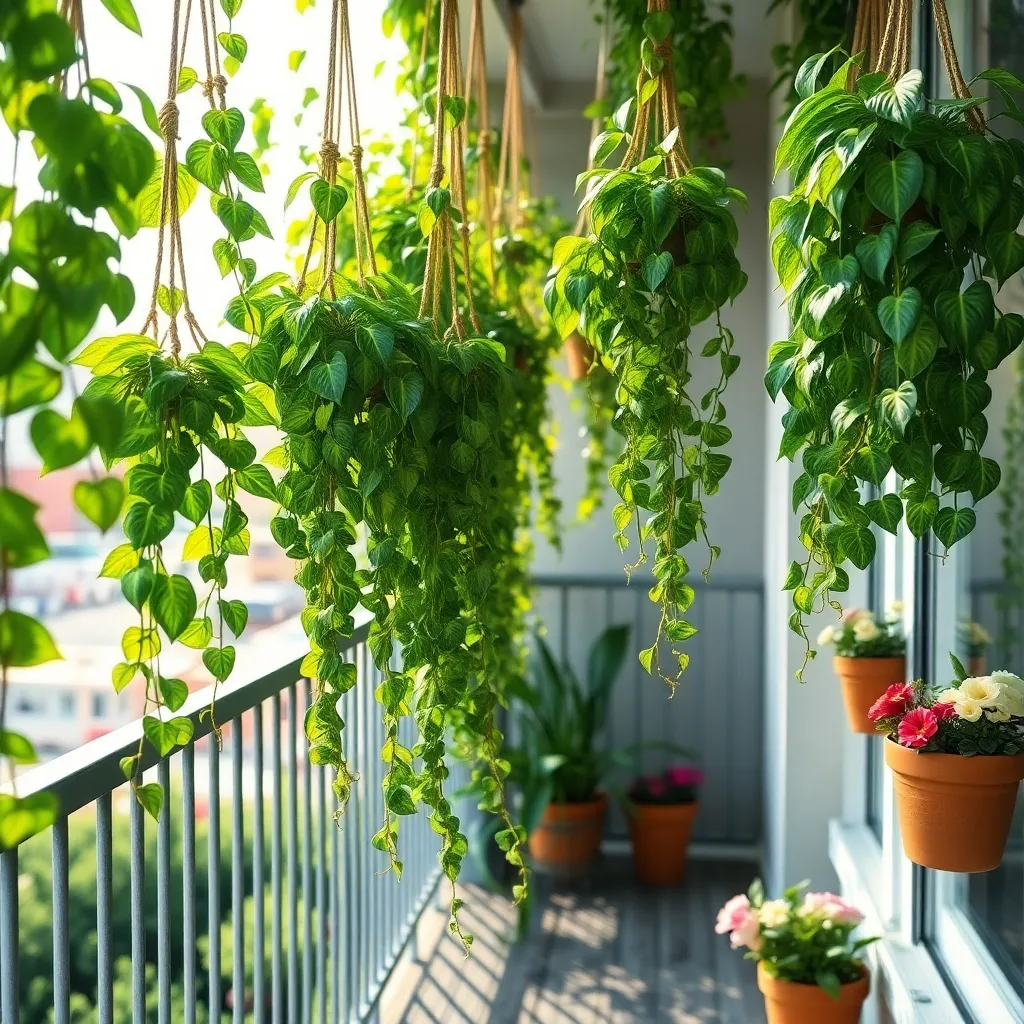
Hanging Pothos plants are a fantastic choice for apartment balconies due to their versatility and low maintenance. These plants not only enhance the aesthetic appeal of your space but also contribute to improved air quality by removing toxins like formaldehyde and benzene.
To keep your Pothos thriving, consider using a well-draining potting mix, such as a combination of peat moss and perlite. This setup ensures that excess water doesn’t linger, reducing the risk of root rot—a common issue with overwatering.
Water your Pothos when the top inch of soil feels dry to the touch, typically once a week. In the winter months, you may need to reduce watering frequency as the plant’s growth slows down.
For optimal growth, place your Pothos in a spot that receives indirect sunlight, as direct sunlight can scorch the leaves. If your balcony is shaded, don’t worry—Pothos is adaptable and can tolerate low-light conditions, although its growth might slow.
- Pruning: Trim back any long vines to encourage bushier growth and maintain a tidy appearance.
- Feeding: Use a balanced liquid fertilizer once a month during spring and summer to support vigorous growth.
- Humidity: Increase humidity by misting the leaves occasionally or placing a tray of water nearby.
Herb Spiral Planter (Maximize Culinary Diversity)
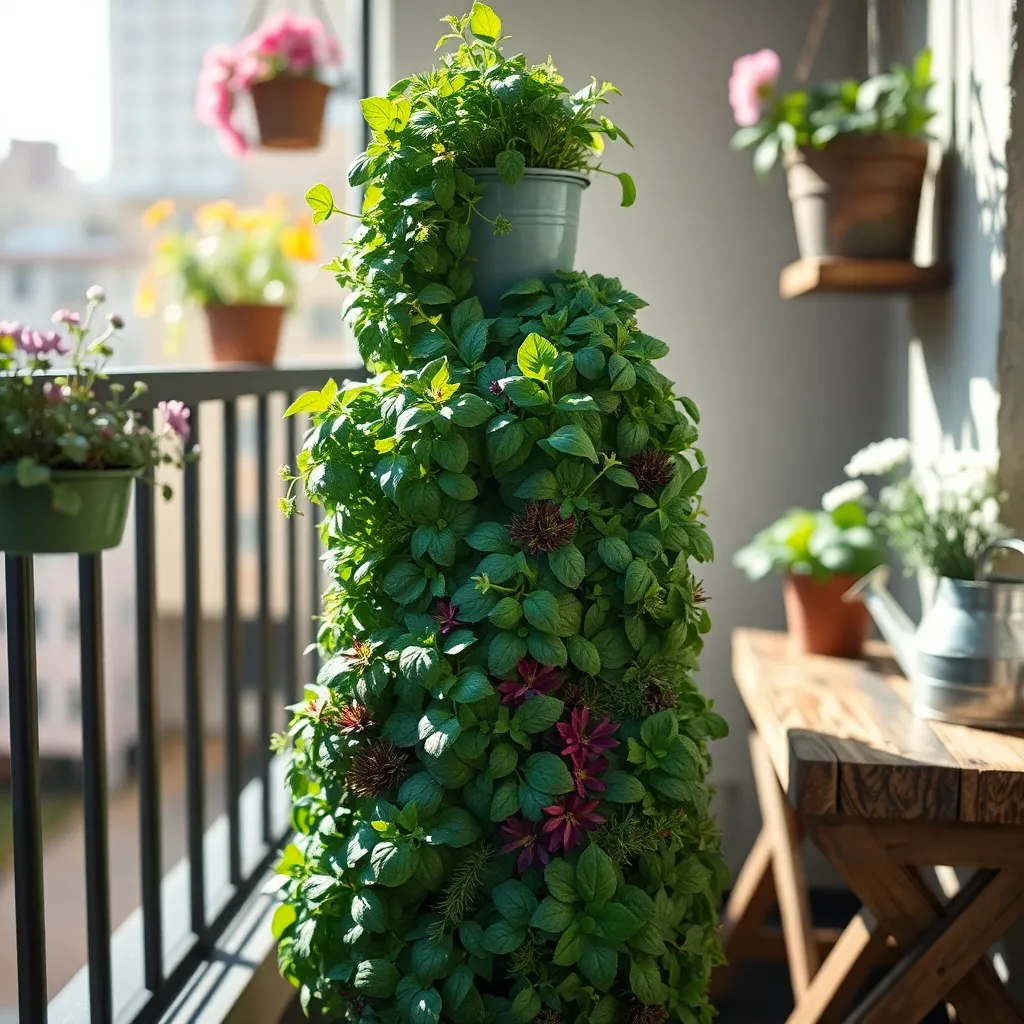
An herb spiral planter is an ingenious way to maximize space and boost the variety of culinary herbs on your apartment balcony. This vertical garden structure allows you to grow multiple herbs with differing sun and water needs, all in one compact area.
To construct an herb spiral, use natural materials like stones or bricks to create a spiral wall around a mound of soil. As you build, make sure the base is wide and stable, tapering gently towards the top, which provides varying microclimates for different types of herbs.
Choose herbs carefully based on their sun and water requirements. For instance, plant sun-loving herbs like rosemary and thyme at the top, where they can soak up maximum sunlight, while moisture-loving plants like mint can thrive at the base.
Watering needs will vary across the spiral, with the top requiring more frequent watering and the base retaining more moisture. Use a well-draining soil mix enriched with organic compost to ensure that all your herbs have the nutrients they need to flourish.
Regularly prune your herbs to encourage bushier growth and prevent any single plant from overshadowing the others. This not only keeps your spiral looking lush but also provides you with a constant supply of fresh leaves for cooking.
Bamboo Privacy Screens (Natural Windbreak and Shade)
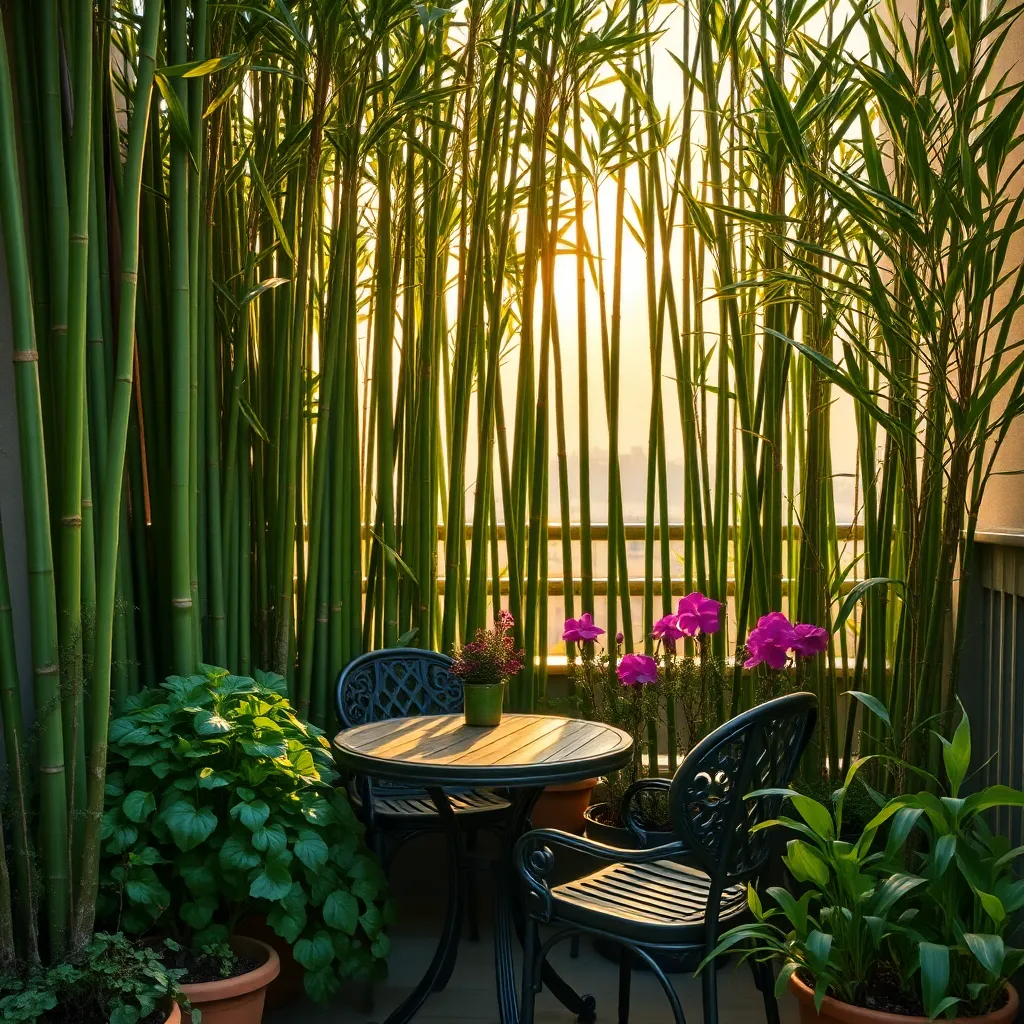
Bamboo is an excellent choice for creating a natural privacy screen on your apartment balcony. It not only offers a lush, green aesthetic but also serves as an effective windbreak and shade provider, enhancing your outdoor space’s comfort.
When selecting bamboo for your balcony, opt for clumping varieties to prevent invasive growth. These varieties are more manageable in containers, which is ideal for small spaces like balconies.
Proper container selection is crucial for bamboo’s success; choose pots that are at least 18 inches deep to accommodate root growth. Ensure the containers have adequate drainage, as bamboo thrives in well-drained soil to prevent root rot.
To keep your bamboo healthy, water it regularly, aiming for soil that is consistently moist but not waterlogged. During hot, dry periods, you might need to water your bamboo more frequently, possibly twice a week.
For thriving bamboo, feed it with a balanced, slow-release fertilizer in the spring. This will encourage robust growth and maintain the plant’s lush appearance throughout the growing season.
Advanced gardeners might consider pruning their bamboo to maintain the desired height and shape. Regularly trim the tops and remove any dead or weak canes to promote healthy growth and an appealing structure.
Succulent Collection (Low-Maintenance and Resilient)
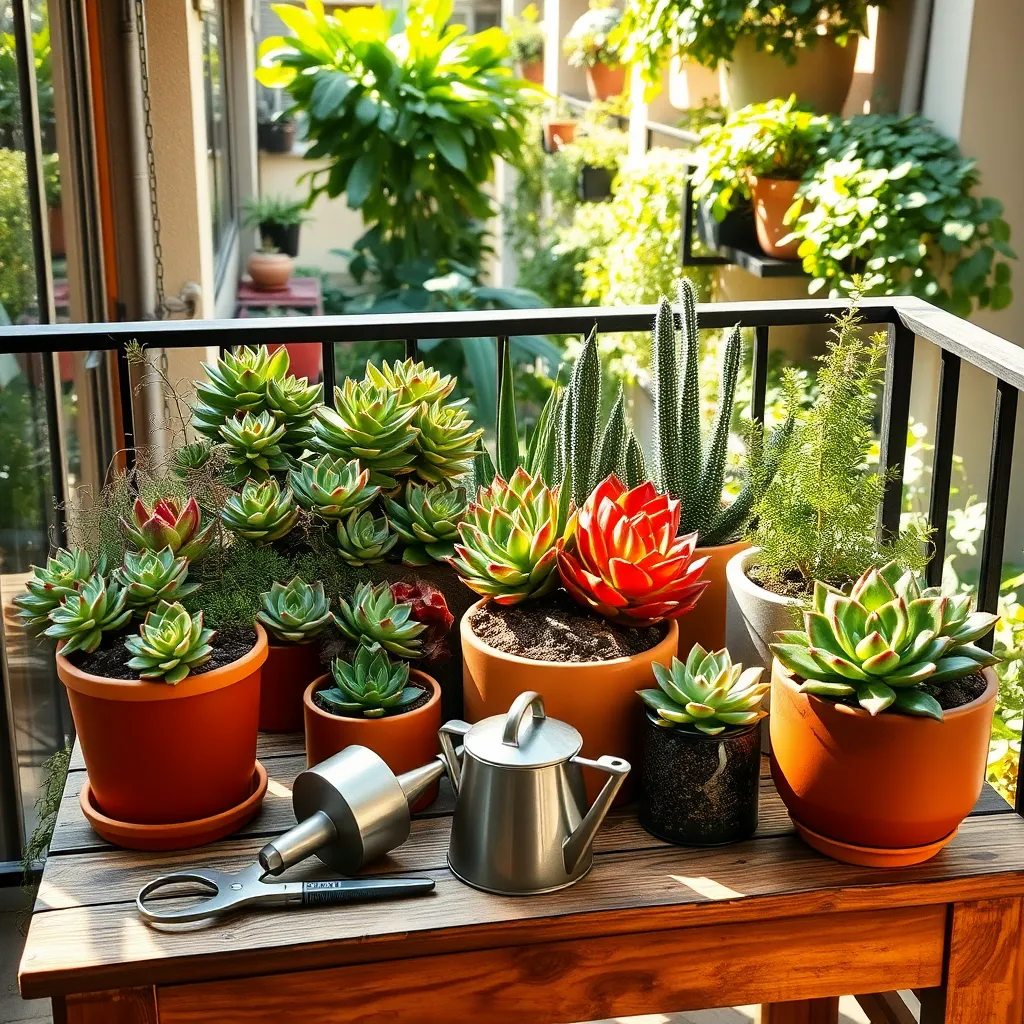
Succulents are an excellent choice for apartment balconies due to their low-maintenance nature and resilience. These plants thrive in small spaces and require minimal watering, making them ideal for busy urban dwellers.
To ensure your succulents flourish, choose a well-draining soil mix, such as a cactus or succulent blend. It’s important to water them sparingly; typically, once every two weeks is sufficient, allowing the soil to dry out completely between waterings.
Position your succulents in a spot where they receive bright, indirect light for most of the day. While they are generally hardy, protect them from extreme temperatures, especially frost, by moving them indoors or using a protective cover when necessary.
For an attractive and healthy succulent collection, consider grouping various types like Echeveria, Jade Plant, and Aloe Vera. Mixing different shapes and colors can create a visually appealing display while catering to different light and watering needs within the same microenvironment.
Vertical Wall Planters (Space-Saving Greenery Display)
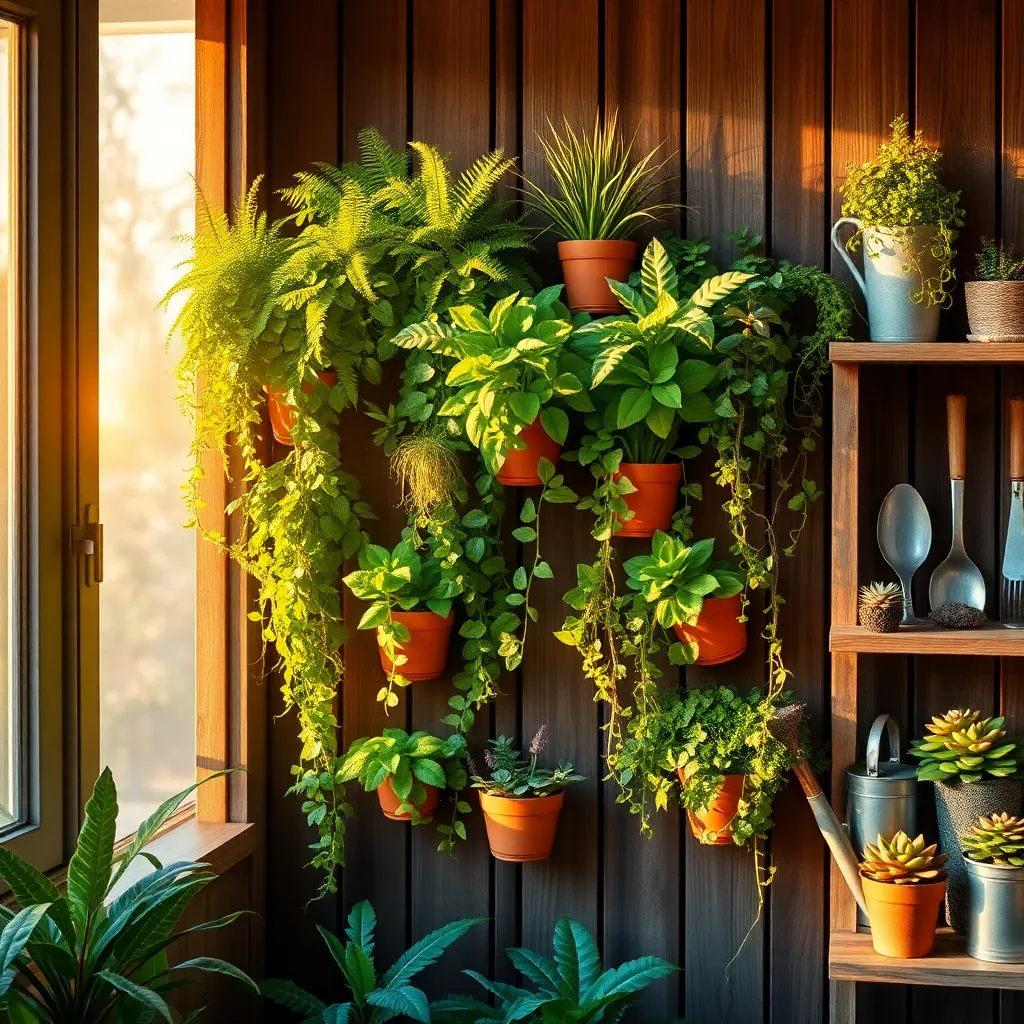
Vertical wall planters are a fantastic solution for maximizing space on apartment balconies. Not only do they add a lush green aesthetic, but they also allow you to grow a variety of plants without occupying precious floor space.
When choosing plants for vertical planters, consider species that thrive in small soil volumes and require minimal maintenance. Herbs like basil, mint, or thyme are excellent options, providing both beauty and functionality for your cooking needs.
To ensure success with your vertical garden, use a well-draining potting mix to prevent waterlogging. It’s crucial to water evenly, allowing moisture to reach all plants in the arrangement, especially those at the top that might dry out faster.
Advanced gardeners might experiment with self-watering systems that can be integrated into vertical planters. These systems can help maintain consistent moisture levels, reducing the frequency of manual watering and ensuring healthy plant growth.
Self-Watering Planters (Effortless Hydration for Busy Lives)
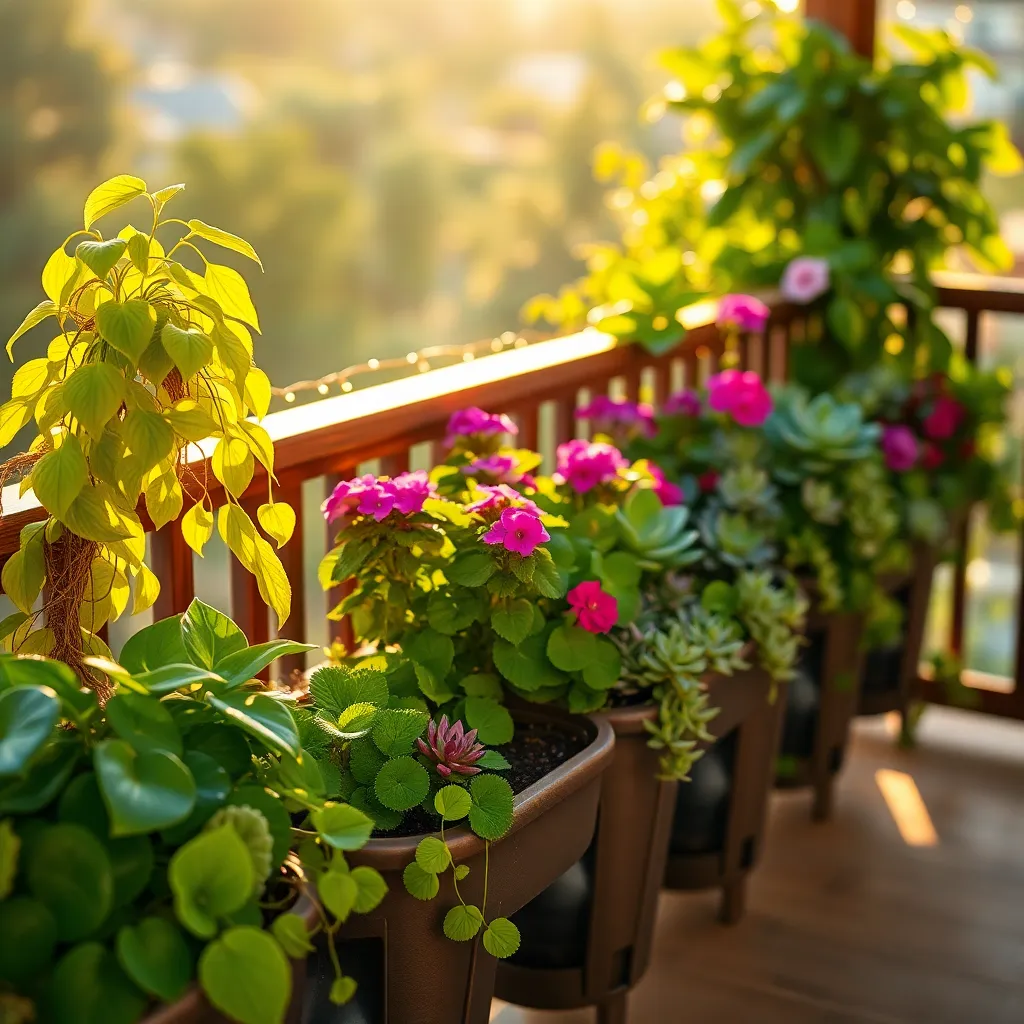
Self-watering planters are a fantastic solution for busy apartment dwellers who want to maintain healthy plants without the constant worry of watering. These planters are designed with a built-in reservoir that allows plants to draw water as needed, promoting consistent hydration and reducing the risk of over- or under-watering.
For those new to gardening, these planters offer a simple way to ensure your plants thrive, even if you tend to forget watering schedules. Choose a planter with a transparent water level indicator so you can easily monitor when to refill the reservoir, ensuring your plants have a continuous water supply.
Experienced gardeners can take advantage of self-watering planters by customizing the soil mix for optimal plant growth. Use a well-draining potting mix enriched with perlite or vermiculite to ensure that roots have access to both moisture and air, promoting robust growth and reducing root rot risks.
To maximize the benefits of self-watering planters, consider the specific needs of your plants. Most houseplants, such as ferns and peace lilies, thrive in these planters because they prefer consistent moisture levels. However, always check the specific water needs of each plant species to avoid waterlogging those that prefer drier conditions, like succulents or cacti.
Shade-Tolerant Ferns (Lush Green Look in Low Light)
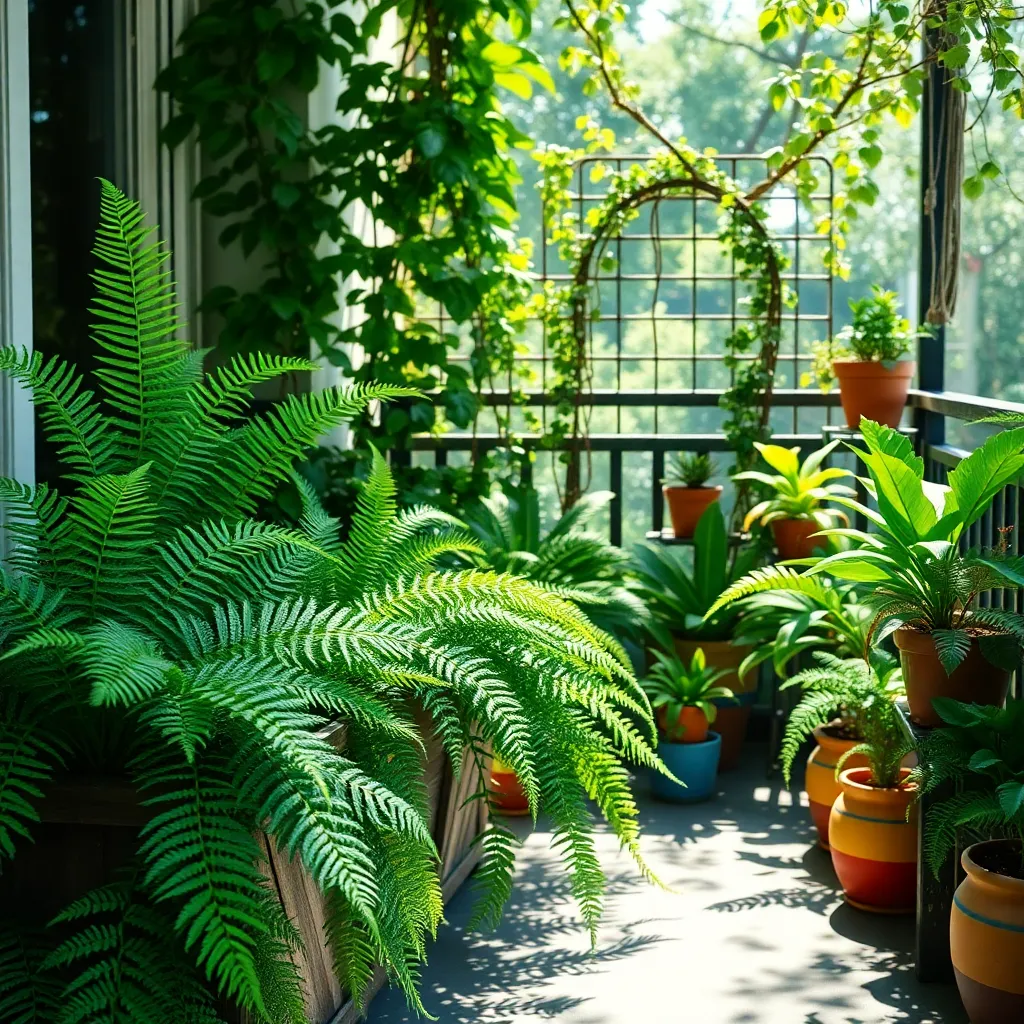
For those seeking a lush green look in shaded areas, shade-tolerant ferns are a perfect choice for apartment balconies. These plants thrive in low-light conditions, making them ideal for spaces that don’t receive direct sunlight.
When caring for ferns, it’s crucial to maintain a consistent level of moisture in the soil. Water them regularly, but ensure the soil has good drainage to prevent root rot.
Choosing the right soil is vital; use a well-draining potting mix that retains moisture without becoming waterlogged. Adding a little organic matter, such as peat moss, can significantly improve the soil’s water retention capabilities.
Advanced gardeners might consider misting ferns to replicate their natural humid environments, especially in drier climates. Grouping ferns together can also create a microclimate that boosts humidity, benefiting all the plants.
Pollinator-Friendly Flowers (Attract Bees and Butterflies)
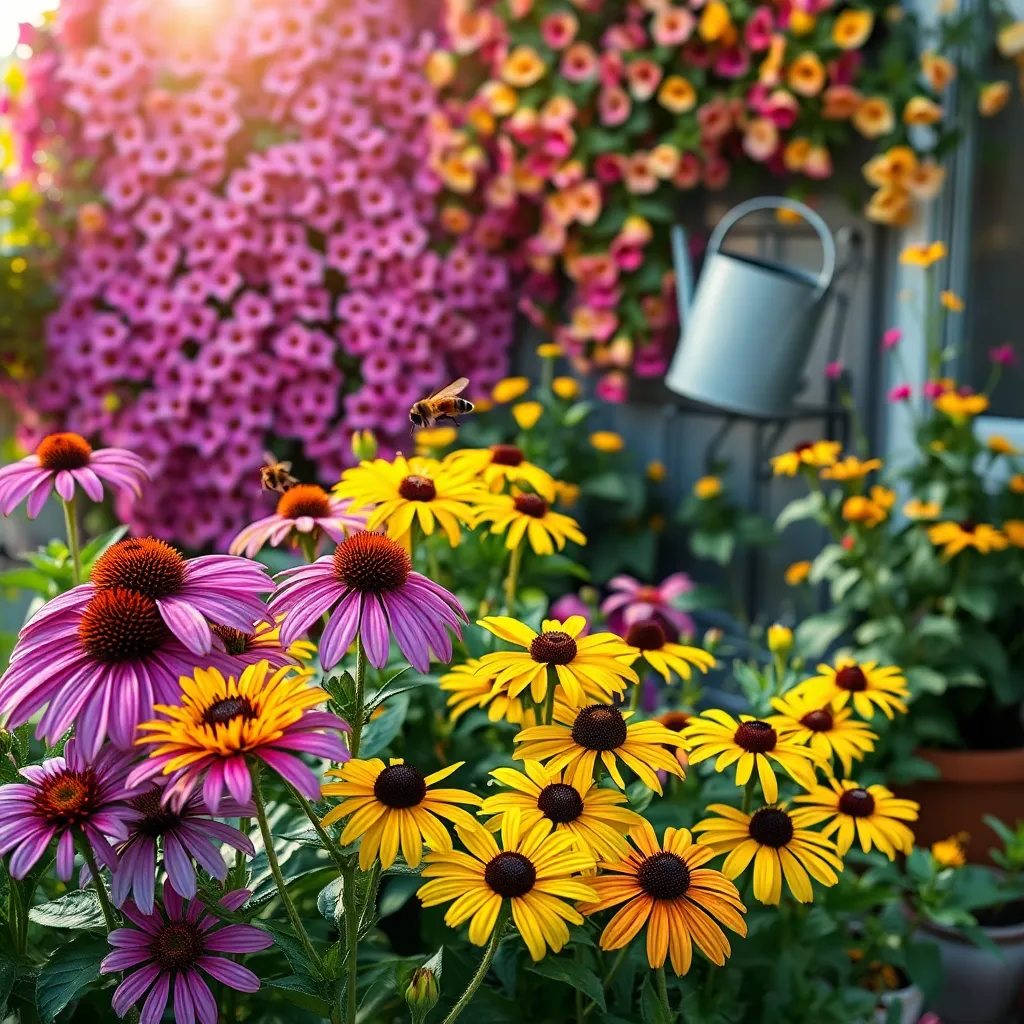
For apartment dwellers, cultivating pollinator-friendly flowers on your balcony can transform your space into a vibrant haven for bees and butterflies. Start with specific plant choices like lavender, coneflowers, and zinnias, which are known to attract these beneficial insects.
Lavender is not only aromatic but also a favorite among pollinators. Plant it in well-draining soil and ensure it receives at least six hours of sunlight each day to thrive.
Coneflowers, or echinacea, are another excellent choice for their low maintenance needs and ability to bloom throughout the summer. Water them deeply once a week, allowing the soil to dry out between waterings to prevent root rot.
Zinnias are perfect for adding bursts of color to your balcony while attracting butterflies. They prefer a sunny location and require regular watering, especially during dry spells, to keep their blooms vibrant and healthy.
Incorporating a mix of these flowers can create a continuous nectar source, which is vital for sustaining pollinators. Consider using a variety of colors and shapes to appeal to different species and enhance the visual appeal of your garden.
For an advanced tip, try planting in layers with taller plants at the back and shorter ones at the front to maximize space and create a lush, inviting environment. This layout not only optimizes balcony space but also provides diverse habitats and feeding stations for pollinators.
Conclusion: Growing Success with These Plants
In exploring the ’10 Best Plants for Apartment Balconies,’ we’ve discovered a vibrant metaphor for nurturing relationships. Each plant symbolizes a core relationship concept: resilience, adaptability, growth, communication, patience, support, balance, space, harmony, and appreciation. These principles, like plants, thrive with care and intentionality. As you cultivate your balcony garden, consider how these practices can enrich your relationships.
An immediate action step you can take is to choose one plant that resonates with a relationship concept you wish to enhance, and dedicate time to both nurturing the plant and applying the concept in your interactions.
As you embark on this journey, bookmark this article as a valuable resource to revisit and reflect upon. Let it serve as a gentle reminder of the effort and love required to maintain thriving relationships.
Remember, the seeds of relationship success are sown with small, consistent actions. With each care-filled step, you are building a foundation for lasting connection and happiness. Embrace this opportunity to grow, and know that the flourishing of your relationships is within reach.

